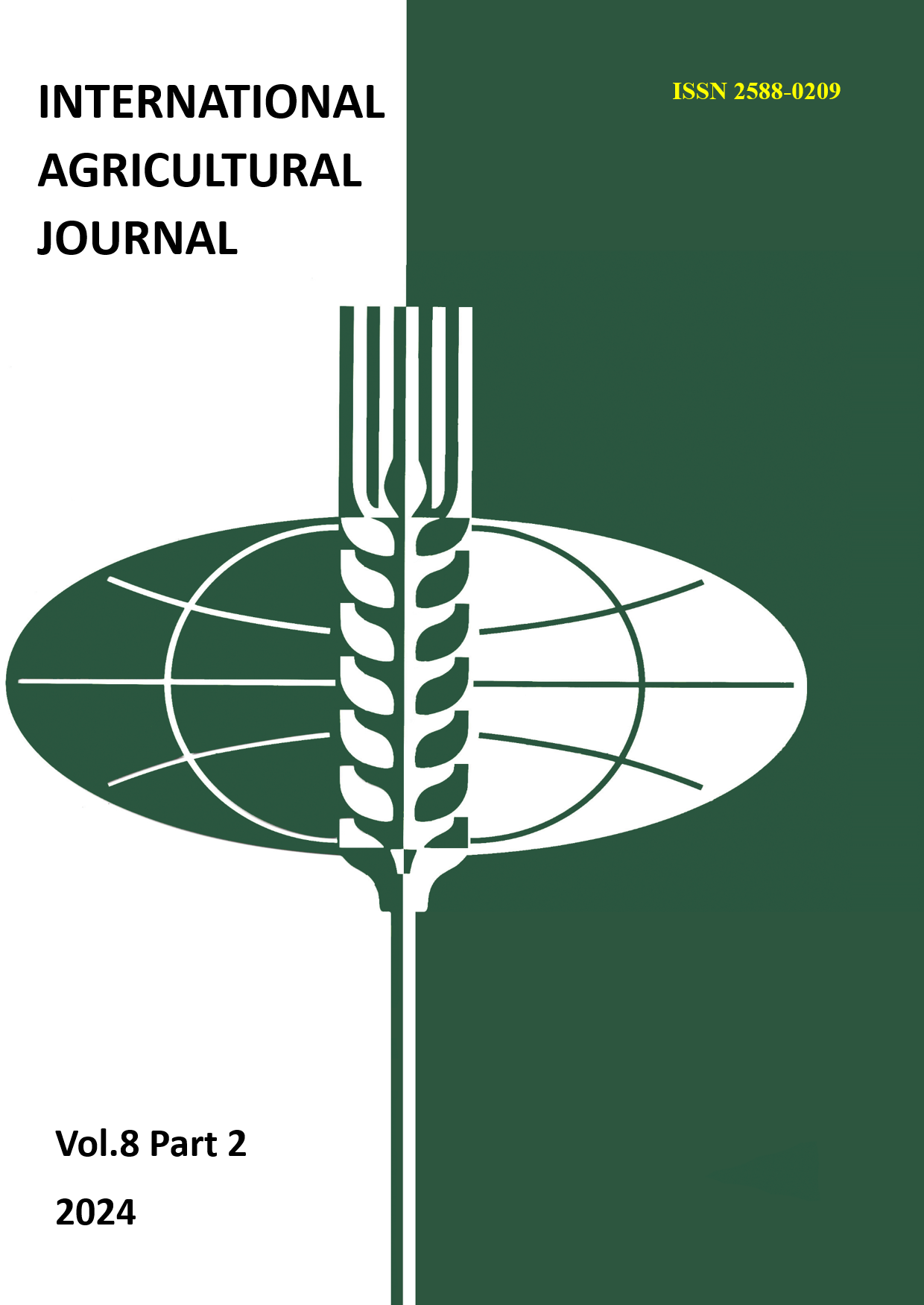ANALYSİS OF ENERGY EFFİCİENCY AND IMPACT AREA İN INTENSİFİED PRODUCTİON CONDİTİONS
Main Article Content
Abstract
Energy in agriculture began its triumphant march after the end of World War II. Energy in agriculture has made it possible to increase the productivity of the agro-industrial complex in the shortest possible time. Electrification, heating and technical equipment of facilities have modernized the industry and given it new capacities for further development. One of the most important indicators of effective work in the agricultural sector is the minimization of energy consumption and natural resources and the optimization of the impact zone of the technological sphere. it is one of the most relevant. Today we are witnessing a limited amount of energy resources on the planet, the high price of electricity, the negative impact on nature and our health. All this suggests that it would be more rational and smarter to reduce the consumption of such energy, rather than constantly increase its production. The problems will only grow from this. For many years now, the world has been searching for various ways to reduce electricity consumption through its rational use. These indicators characterize the bioenergy base and bioenergy potential of the agricultural region. The purpose of this work is to assist in the development of projects based on the analytical method to ensure energy conservation and energy-efficient technologies, as well as optimal field structure in the distribution of energy across all types of resources in agricultural production. When preparing and analyzing the energy balance in agricultural production, special attention is paid to informed choices and decisions regarding the effective distribution of energy flows for all types of resources in the region..
Article Details
References
2. Khalilov R.T. (2011). Energy saving resources in plant breeding / R.T.Khalilov, T.M. Islamov // Scientific works of ADAU. – Ganja: ADAU Publishing House, No. 2. 12-14 p.
3. Dobrotvorskaya S.G. (2016). Technosphere human security in modern conditions: Monograph / S.G. Dobrotvorskaya, T.L. Zefirova. – Kazan, -236 p.
4. Energy intensity of Russia's GDP in 2015-2020, part 2, international comparisons // Energy saving. -2022, No. 3. –pp.19-23
5. Energy efficiency, resource management and water use // Proceedings of the III International Scientific Conference. – Volgograd, 2016. -792 p.
6. M. Salta et al. (2009). Energy use in the Greek manufacturing sector: a methodolo¬gical framework based on physical indicators with an analysis of aggregation and decomposition. Energy
7. A.B. Sebitosi (2008). Energy efficiency, Supply reliability and the Environment in South Africa: Going beyond strategic Documents Energy
8. M.T. Van Vis et al. (2002) Energy Efficiency and Renewable Energy Policy in the Czech Republic within the framework of accession to the European Energy Union
9. Nur Muhammad Abd Rahman, Chin Hau Lim, Ahmad Fazlizan, (2021). Opti¬mizing the energy saving potential of public hospitals through a systematic approach to certification of environmentally friendly buildings in Malaysia, Journal of Civil Engineering, vol. 43, 2021, 103088, ISSN 2352-7102, https://doi.org/10.1016 /j.jobe..103088 .
10. Ben Chak-Man Leung, (2018). Strategies for greening existing buildings [GEB], Energy Reports, Volume 4, pp. 159-206, ISSN 2352-4847, https://doi.org/ 10.1016/j.egyr.2018.01 . 003.
11. Madlener R. et al. (2009). Energy Recovery and Economic Growth: an overview of the main problems and needs of Energy research
12. Vera I. et al. (2007) Energy indicators of sustainable development Energy
13. R.M.Haciyev, R.A.Saidov, G.B.Mammadov, U.T.Taghiyev, G. Allahverdiyeva. (2022). Analysis of the main design and operating parameters of the device for the fermentation of bird droppings / EUREKA: Physics and Engineering, 5, 00–00. https://doi.org/10.21303/2461-4262..002306 link_1 or link_2 https://journal.eu-jr.eu/engineering/issue/view/217
14. Haciyev, R., K.Salmanova, G. Mammadov, , U.T.Taghiyev. (2022). Application of intensive techno¬logies for improved production processes in poultry farms./ Eastern-European Journal of Enterprise Technologies, 4 (1 (118)), (2022) pp.90–102. doi: https://doi.org/10.15587/1729-4061.2022.262999

